- Home
- George R. R. Martin
Dreamsongs. Volume I Page 10
Dreamsongs. Volume I Read online
Page 10
Grady ran his fingers through his unkempt hair and shook his head doubtfully. There was a long, awkward silence. He leaned across the desk.
And, suddenly, his hand darted toward the laser pistol.
Kagen reacted. He dove forward, delayed only slightly by the few tractor beams that still held him. His hand flashed toward Grady’s wrist in a crippling arc.
And suddenly wrenched to a halt as the tractor beams seized Kagen roughly, held him rigid, and then smashed him to the floor.
Grady, his hand frozen halfway to the pistol, leaned back in the chair. His face was white and shaken. He raised his hand and the tractor beams let up a bit. Kagen climbed slowly to his feet.
“You see, Kagen,” said Grady. “That little test proves you’re as fit as ever. You’d have gotten me if I hadn’t kept a few tractors on you to slow you down. I tell you, we need men with your training and experience. We need you against the Hrangans. Reenlist.”
Kagen’s cold blue eyes still seethed with anger. “Damn the Hrangans,” he said. “I’m not reenlisting and no goddamn little tricks of yours are going to make me change my mind. I’m going to Earth. You can’t stop me.”
Grady buried his face in his hands and sighed.
“All right, Kagen,” he said at last. “You win. I’ll put through your request.”
He looked up one more time, and his dark eyes looked strangely troubled.
“You’ve been a great soldier, Kagen. We’ll miss you. I tell you that you’ll regret this decision. Are you sure you won’t reconsider?”
“Absolutely sure,” Kagen snapped.
The strange look suddenly vanished from Grady’s eyes. His face once more took on the mask of bored indifference.
“Very well,” he said curtly. “You are dismissed.”
The tractors stayed on Kagen as he turned. They guided him—very firmly—from the building.
“YOU READY, KAGEN?” RAGELLI ASKED, LEANING CASUALLY AGAINST the door of the cubicle.
Kagen picked up his small travel bag and threw one last glance around to make sure he hadn’t forgotten anything. He hadn’t. The room was quite bare.
“Guess so,” he said, stepping through the door.
Ragelli slipped on the plastoid helmet that had been cradled under his arm and hurried to catch up as Kagen strode down the corridor.
“I guess this is it,” he said as he matched strides.
“Yeah,” Kagen replied. “A week from now I’ll be taking it easy back on Earth while you’re getting blisters on your tail sitting around in that damned duralloy tuxedo of yours.”
Ragelli laughed. “Maybe,” he said. “But I still say you’re nuts to go to Earth of all places, when you could command a whole damned training camp on Wellington. Assuming you wanted to quit at all, which is also crazy—”
The barracks door slid open before them and they stepped through, Ragelli still talking. A second guard flanked Kagen on the other side. Like Ragelli, he was wearing light battle armor.
Kagen himself was in full dress whites, trimmed with gold braid. A ceremonial laser, deactivated, was slung in a black leather holster at his side. Matching leather boots and a polished steel helmet set off the uniform. Azure blue bars on his shoulder signified field officer rank. His medals jangled against his chest as he walked.
Kagen’s entire third assault squad was drawn up at attention on the spacefield behind the barracks in honor of his retirement. Alongside the ramp to the shuttlecraft, a group of high officers stood by, cordoned off by defensive screens. Major Grady was in the front row, his bored expression blurred somewhat by the screens.
Flanked by the two guards, Kagen walked across the concrete slowly, grinning under his helmet. Piped music welled out over the field, and Kagen recognized the T.E.F. battle hymn and the Wellington anthem.
At the foot of the ramp he turned and looked back. The company spread out before him saluted in unison on a command from the high officers and held position until Kagen returned the salute. Then one of the squad’s other field officers stepped forward, and presented him with his discharge papers.
Jamming them into his belt, Kagen threw a quick, casual wave to Ragelli, then hurried up the ramp. It lifted slowly behind him.
Inside the ship, a crewman greeted him with a curt nod. “Got special quarters prepared for you,” he said. “Follow me. Trip should only take about fifteen minutes. Then we’ll transfer you to a starship for the Earth trip.”
Kagen nodded and followed the man to his quarters. They turned out to be a plain, empty room, reinforced with duralloy plates. A viewscreen covered one wall. An acceleration couch faced it.
Alone, Kagen sprawled out on the acceleration couch, clipping his helmet to a holder on the side. Tractor beams pressed down gently, holding him firmly in place for the liftoff.
A few minutes later a dull roar came from deep within the ship and Kagen felt several gravities press down upon him as the shuttlecraft took off. The viewscreen, suddenly coming to life, showed the planet dwindling below.
The viewer blinked off when they reached orbit. Kagen started to sit up but found he still could not move. The tractor beams held him pinned to the couch.
He frowned. There was no need for him to stay in the couch once the craft was in orbit. Some idiot had forgotten to release him.
“Hey,” he shouted, figuring there would be a com box somewhere in the room. “These tractors are still on. Loosen the damned things so I can move a little.”
No one answered.
He strained against the beams. Their pressure seemed to increase. The blasted things were starting to pinch a little, he thought. Now those morons were turning the knob the wrong way.
He cursed under his breath. “No,” he shouted. “Now the tractors are getting heavier. You’re adjusting them the wrong way.”
But the pressure continued to climb and he felt more beams locking on him, until they covered his body like an invisible blanket. The damned things were really starting to hurt now.
“You idiots,” he yelled. “You morons. Cut it out, you bastards.” With a surge of anger he strained against the beams, cursing. But even Wellington-bred muscle was no match for tractors. He was held tightly to the couch.
One of the beams was trained on his chest pocket. Its pressure was driving his Stellar Cross painfully into his skin. The sharp edge of the polished medal had already sliced through the uniform and he could see a red stain spreading slowly through the white.
The pressure continued to mount and Kagen writhed in pain, squirming against his invisible shackles. It did no good. The pressure still went higher and more and more beams came on.
“Cut it out!” he screeched. “You bastards, I’ll rip you apart when I get out of here. You’re killing me, dammit!”
He heard the sharp snap of a bone suddenly breaking under the strain. Kagen felt a stab of intense pain in his right wrist. An instant later there was another snap.
“Cut it out!” he cried, his voice shrill with pain. “You’re killing me. Damn you, you’re killing me!”
And suddenly he realized he was right.
GRADY LOOKED UP WITH A SCOWL AT THE AIDE WHO ENTERED THE office.
“Yes? What is it?”
The aide, a young Earther in training for high officer rank, saluted briskly. “We just got the report from the shuttlecraft, sir. It’s all over. They want to know what to do with the body.”
“Space it,” Grady replied. “Good as anything.” A thin smile flickered across his face and he shook his head. “Too bad. Kagen was a good man in combat but his psych training must have slipped somewhere. We should send a strong note back to his barracks conditioner. Though it’s funny it didn’t show up until now.”
He shook his head again. “Earth,” he said. “For a moment he even had me wondering if it was possible. But when I tested him with my laser, I knew. No way, no way.” He shuddered a little. “As if we’d ever let a War Worlder loose on Earth.” Then he turned back to his paperwork.
<
br /> As the aide turned to leave Grady looked up again.
“One other thing,” he said. “Don’t forget to send that PR release back to Earth. Make it War-Hero-Dies-When-Hrangans-Blast-Ship. Jazz it up good. Some of the big com networks should pick it up and it’ll make good publicity. And forward his medals to Wellington. They’ll want them for his barracks museum.”
The aide nodded and Grady returned to his work. He still looked quite bored.
THE EXIT TO SAN BRETA
IT WAS THE HIGHWAY THAT FIRST CAUGHT MY ATTENTION. UP TO that night, it had been a perfectly normal trip. It was my vacation, and I was driving to L.A. through the Southwest, taking my own sweet time about it. That was nothing new; I’d done it several times before.
Driving is my hobby. Or cars in general, to be precise. Not many people take the time to drive anymore. It’s just too slow for most. The automobile’s been pretty much obsolete since they started mass-producing cheap copters back in ’93. And whatever life it had left in it was knocked out by the invention of the personal gravpak.
But it was different when I was a kid. Back then, everybody had a car, and you were considered some sort of a social freak if you didn’t get your driver’s license as soon as you were old enough. I got interested in cars when I was in my late teens, and have stayed interested ever since.
Anyway, when my vacation rolled around, I figured it was a chance to try out my latest find. It was a great car, an English sports model from the late ’70s. Jaguar XKL. Not one of the classics, true, but a nice car all the same. It handled beautifully.
I was doing most of my traveling at night, as usual. There’s something special about night driving. The old, deserted highways have an atmosphere about them in the starlight, and you can almost see them as they once were—vital and crowded and full of life, with cars jammed bumper to bumper as far as the eye could see.
Today, there’s none of that. Only the roads themselves are left, and most of them are cracked and overgrown with weeds. The states can’t bother taking care of them anymore—too many people objected to the waste of tax money. But ripping them up would be too expensive. So they just sit, year after year, slowly falling apart. Most of them are still drivable, though; they built their roads well back in the old days.
There’s still some traffic. Car nuts like me, of course. And the hovertrucks. They can ride over just about anything, but they can go faster over flat surfaces. So they stick to the old highways pretty much.
It’s kind of awesome whenever a hovertruck passes you at night. They do about two hundred or so, and no sooner do you spot one in your rearview mirror then it’s on top of you. You don’t see much—just a long silver blur, and a shriek as it goes by. And then you’re alone again.
Anyway, I was in the middle of Arizona, just outside San Breta, when I first noticed the highway. I didn’t think much of it then. Oh, it was unusual all right, but not that unusual.
The highway itself was quite ordinary. It was an eight-lane freeway, with a good, fast surface, and it ran straight from horizon to horizon. At night, it was like a gleaming black ribbon running across the white sands of the desert.
No, it wasn’t the highway that was unusual. It was its condition. At first, I didn’t really notice. I was enjoying myself too much. It was a clear, cold night, and the stars were out, and the Jag was riding beautifully.
Riding too beautifully. That’s when it first dawned on me. There were no bumps, no cracks, no potholes. The road was in prime condition, almost as if it had just been built. Oh, I’d been on good roads before. Some of them just stood up better than others. There’s a section outside Baltimore that’s superb, and parts of the L.A. freeway system are quite good.
But I’d never been on one this good. It was hard to believe a road could be in such good shape, after all those years without repair.
And then there were the lights. They were all on, all bright and clear. None of them were busted. None of them were out, or blinking. Hell, none of them were even dim. The road was beautifully lighted.
After that, I began to notice other things. Like the traffic signs. Most places, the traffic signs are long gone, removed by souvenir hunters or antique collectors as a reminder of an older, slower America. No one replaces them—they aren’t needed. Once in a while you’ll come across one that’s been missed, but there’s never anything left but an oddly shaped, rusted hunk of metal.
But this highway had traffic signs. Real traffic signs. I mean, ones you could read. Speed limit signs, when no one’s observed a speed limit in years. Yield signs, when there’s seldom any other traffic to yield to. Turn signs, exit signs, caution signs—all kinds of signs. And all as good as new.
But the biggest shock was the lines. Paint fades fast, and I doubt that there’s a highway in America where you could still make out the white lines in a speeding car. But you could on this one. The lines were sharp and clear, the paint fresh, the eight lanes clearly marked.
Oh, it was a beautiful highway all right. The kind they had back in the old days. But it didn’t make sense. No road could stay in this condition all these years. Which meant someone had to be maintaining it. But who? Who would bother to maintain a highway that only a handful of people used each year? The cost would be enormous, with no return at all.
I was still trying to puzzle it out when I saw the other car.
I had just flashed by a big red sign marking Exit 76, the exit to San Breta, when I saw it. Just a white speck on the horizon, but I knew it had to be another motorist. It couldn’t be a hovertruck, since I was plainly gaining on it. And that meant another car, and a fellow aficionado.
It was a rare occasion. It’s damn seldom you meet another car on the open road. Oh, there are regular conventions, like the Fresno Festival on Wheels and the American Motoring Association’s Annual Trafficjam. But they’re too artificial for my tastes. Coming across another motorist on the highway is something else indeed.
I hit the gas, and speeded up to around one-twenty. The Jag could do better, but I’m not a nut on speed like some of my fellow drivers. And I was picking up ground fast. From the way I was gaining, the other car couldn’t have been doing better than seventy.
When I got within range, I let go with a blast on my horn, trying to attract his attention. But he didn’t seem to hear me. Or at least he didn’t show any sign. I honked again.
And then, suddenly, I recognized the make.
It was an Edsel.
I could hardly believe it. The Edsel is one of the real classics, right up there with the Stanley Steamer and the Model T.
The few that are left sell for a rather large fortune nowadays.
And this was one of the rarest, one of those original models with the funny noses. There were only three or four like it left in the world, and those were not for sale at any price. An automotive legend, and here it was on the highway in front of me, as classically ugly as the day it came off the Ford assembly line.
I pulled alongside, and slowed down to keep even with it. I couldn’t say that I thought much of the way the thing had been kept up. The white paint was chipped, the car was dirty, and there were signs of body rust on the lower part of the doors. But it was still an Edsel, and it could easily be restored. I honked again to get the attention of the driver, but he ignored me. There were five people in the car from what I could see, evidently a family on an outing. In the back, a heavy-set woman was trying to control two small kids who seemed to be fighting. Her husband appeared to be soundly asleep in the front seat, while a younger man, probably his son, was behind the wheel.
That burned me. The driver was very young, probably only in his late teens, and it irked me that a kid that age should have the chance to drive such a treasure. I wanted to be in his place.
I had read a lot about the Edsel; books of auto lore were full of it. There was never anything quite like it. It was the greatest disaster the field had ever known. The myths and legends that had grown up around its name were beyond number.<
br />
All over the nation, in the scattered dingy garages and gas depots where car nuts gather to tinker and talk, the tales of the Edsel are told to this day. They say they built the car too big to fit in most garages. They say it was all horsepower, and no brake. They call it the ugliest machine ever designed by man. They retell the old jokes about its name. And there’s one famous legend that when you got it going fast enough, the wind made a funny whistling noise as it rushed around that hood.
All the romance and mystery and tragedy of the old automobile was wrapped up in the Edsel. And the stories about it are remembered and retold long after its glittering contemporaries are so much scrap metal in the junkyards.
As I drove along beside it, all the old legends about the Edsel came flooding back to me, and I was lost in my own nostalgia. I tried a few more blasts on my horn, but the driver seemed intent on ignoring me, so I soon gave up. Besides, I was listening to see if the hood really did whistle in the wind.
I should have realized by then how peculiar the whole thing was—the road, the Edsel, the way they were ignoring me. But I was too enraptured to do much thinking. I was barely able to keep my eyes on the road.
I wanted to talk to the owners, of course. Maybe even borrow it for a little while. Since they were being so damned unfriendly about stopping, I decided to follow them for a bit, until they pulled in for gas or food. So I slowed and began to tail them. I wanted to stay fairly close without tailgating, so I kept to the lane on their immediate left.
As I trailed them, I remember thinking what a thorough collector the owner must be. Why, he had even taken the time to hunt up some rare, old-style license plates. The kind that haven’t been used in years. I was still mulling over that when we passed the sign announcing Exit 77.
The kid driving the Edsel suddenly looked agitated. He turned in his seat and looked back over his shoulder, almost as if he was trying to get another look at the sign we had already left behind. And then, with no warning, the Edsel swerved right into my lane.

 A Dance with Dragons
A Dance with Dragons A Storm of Swords
A Storm of Swords A Feast for Crows
A Feast for Crows A Clash of Kings
A Clash of Kings A Game of Thrones
A Game of Thrones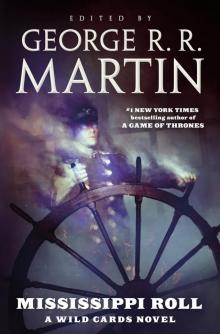 Mississippi Roll
Mississippi Roll Wild Cards V: Down and Dirty
Wild Cards V: Down and Dirty Busted Flush
Busted Flush When the Devil Drives
When the Devil Drives Dying of the Light
Dying of the Light The Ice Dragon
The Ice Dragon Sandkings
Sandkings Jokertown Shuffle
Jokertown Shuffle Dreamsongs. Volume II
Dreamsongs. Volume II Deuces Down
Deuces Down When We Were Heroes
When We Were Heroes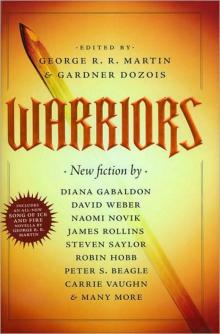 Warriors
Warriors In the House of the Worm
In the House of the Worm Death Draws Five
Death Draws Five Dreamsongs. Volume I
Dreamsongs. Volume I Marked Cards
Marked Cards Dreamsongs
Dreamsongs Card Sharks
Card Sharks Dangerous Women
Dangerous Women Inside Straight
Inside Straight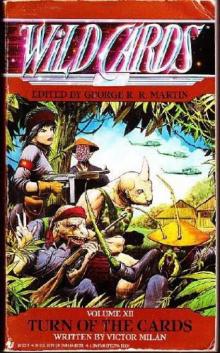 Turn of the Cards
Turn of the Cards Fevre Dream
Fevre Dream High Stakes: A Wild Cards Novel
High Stakes: A Wild Cards Novel Windhaven
Windhaven Tuf Voyaging
Tuf Voyaging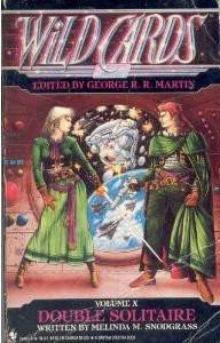 Double Solitaire
Double Solitaire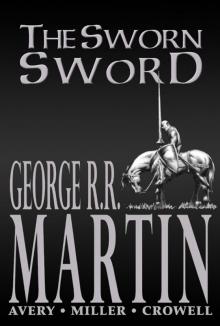 The Sworn Sword
The Sworn Sword Low Chicago
Low Chicago Dead Man's Hand
Dead Man's Hand Wild Cards
Wild Cards Black Trump
Black Trump One Eyed Jacks
One Eyed Jacks Wild Cards: Aces Abroad
Wild Cards: Aces Abroad Lowball: A Wild Cards Novel
Lowball: A Wild Cards Novel Double Solitaire (2019 Edition)
Double Solitaire (2019 Edition) Dealer's Choice
Dealer's Choice Ace in the Hole
Ace in the Hole A Song for Lya: And Other Stories
A Song for Lya: And Other Stories Three Kings
Three Kings Knaves Over Queens
Knaves Over Queens Joker Moon
Joker Moon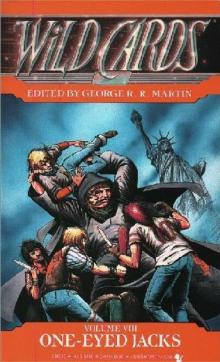 One Eyed Jacks wc-8
One Eyed Jacks wc-8 Down And Dirty wc-5
Down And Dirty wc-5 Mississippi Roll_A Wild Cards Novel
Mississippi Roll_A Wild Cards Novel A Feast for Dragons
A Feast for Dragons The Sworn Sword ttodae-2
The Sworn Sword ttodae-2 Aces High wc-2
Aces High wc-2 Wild Cards 13 : Card Sharks
Wild Cards 13 : Card Sharks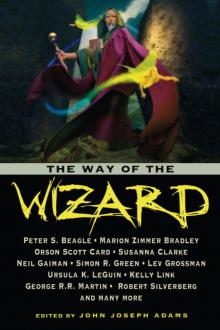 Way of the Wizard
Way of the Wizard Wild Cards VIII: One-Eyed Jacks
Wild Cards VIII: One-Eyed Jacks A Dance With Dragons: Book 5 of A Song of Ice and Fire (Song of Ice & Fire 5)
A Dance With Dragons: Book 5 of A Song of Ice and Fire (Song of Ice & Fire 5) The Princess and The Queen, Or, The Blacks and The Greens (a song of ice and fire)
The Princess and The Queen, Or, The Blacks and The Greens (a song of ice and fire) Wild Cards VI--Ace in the Hole
Wild Cards VI--Ace in the Hole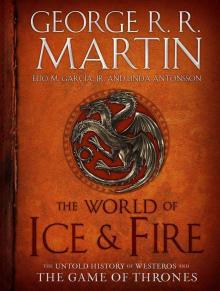 The World of Ice & Fire: The Untold History of Westeros and the Game of Thrones (A Song of Ice and Fire)
The World of Ice & Fire: The Untold History of Westeros and the Game of Thrones (A Song of Ice and Fire) The World of Ice & Fire: The Untold History of Westeros and the Game of Thrones
The World of Ice & Fire: The Untold History of Westeros and the Game of Thrones Busted Flush wc-19
Busted Flush wc-19 A Knight of the Seven Kingdoms
A Knight of the Seven Kingdoms Nightflyers: The Illustrated Edition
Nightflyers: The Illustrated Edition Wild Cards IV
Wild Cards IV Portraits of His Children
Portraits of His Children Dead Mans Hand wc-7
Dead Mans Hand wc-7 Jokers Wild wc-3
Jokers Wild wc-3 The Lonely Songs of Laren Dorr
The Lonely Songs of Laren Dorr Wild Cards III: Jokers Wild
Wild Cards III: Jokers Wild A Game of Thrones Enhanced Edition
A Game of Thrones Enhanced Edition Nightflyers & Other Stories
Nightflyers & Other Stories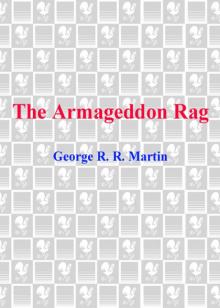 Armageddon Rag
Armageddon Rag Wild Cards: Inside Straight
Wild Cards: Inside Straight A Song for Lya
A Song for Lya A Dance with Dragons: A Song of Ice and Fire: Book Five
A Dance with Dragons: A Song of Ice and Fire: Book Five Song of Fire & Ice 01 - A Game of Thrones
Song of Fire & Ice 01 - A Game of Thrones Death Draws Five wc-17
Death Draws Five wc-17 Turn of the Cards w-12
Turn of the Cards w-12 Wild Cards 14 - Marked Cards
Wild Cards 14 - Marked Cards Hunter's Run
Hunter's Run The Glass Flower
The Glass Flower A Clash of Kings asoiaf-2
A Clash of Kings asoiaf-2 A Game of Thrones 5-Book Bundle: A Song of Ice and Fire Series: A Game of Thrones, A Clash of Kings, A Storm of Swords, A Feast for Crows, and A Dance with Dragons (Song of Ice & Fire)
A Game of Thrones 5-Book Bundle: A Song of Ice and Fire Series: A Game of Thrones, A Clash of Kings, A Storm of Swords, A Feast for Crows, and A Dance with Dragons (Song of Ice & Fire) Ace In The Hole wc-6
Ace In The Hole wc-6 Suicide Kings wc-20
Suicide Kings wc-20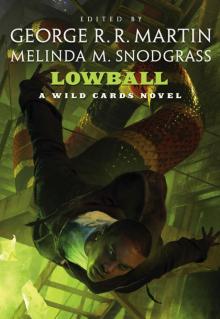 Lowball
Lowball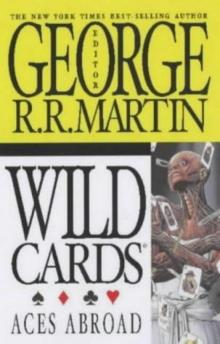 Aces Abroad wc-4
Aces Abroad wc-4 George R. R. Martin's a Game of Thrones 4-Book Bundle
George R. R. Martin's a Game of Thrones 4-Book Bundle A Feast for Crows asoiaf-4
A Feast for Crows asoiaf-4 A Game of Thrones asoiaf-1
A Game of Thrones asoiaf-1 The Mystery Knight ttodae-3
The Mystery Knight ttodae-3 Double Solitaire w-10
Double Solitaire w-10 Wild Cards 15 - Black Trump
Wild Cards 15 - Black Trump A Storm of Swords asoiaf-3
A Storm of Swords asoiaf-3 The Hedge Knight ttodae-1
The Hedge Knight ttodae-1 Dreamsongs 2-Book Bundle
Dreamsongs 2-Book Bundle The World of Ice & Fire
The World of Ice & Fire Starlady & Fast-Friend
Starlady & Fast-Friend Old Mars
Old Mars Fantasy For Good: A Charitable Anthology
Fantasy For Good: A Charitable Anthology Wild Cards V
Wild Cards V A Dance with Dragons asoiaf-5
A Dance with Dragons asoiaf-5 Dealer's Choice w-11
Dealer's Choice w-11 The Book of Magic
The Book of Magic A Game of Thrones 4-Book Bundle
A Game of Thrones 4-Book Bundle Texas Hold 'Em
Texas Hold 'Em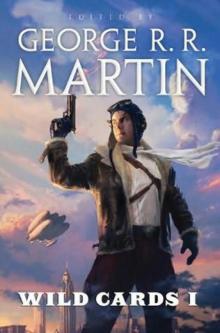 Wildcards wc-1
Wildcards wc-1 Rogues
Rogues Old Venus
Old Venus